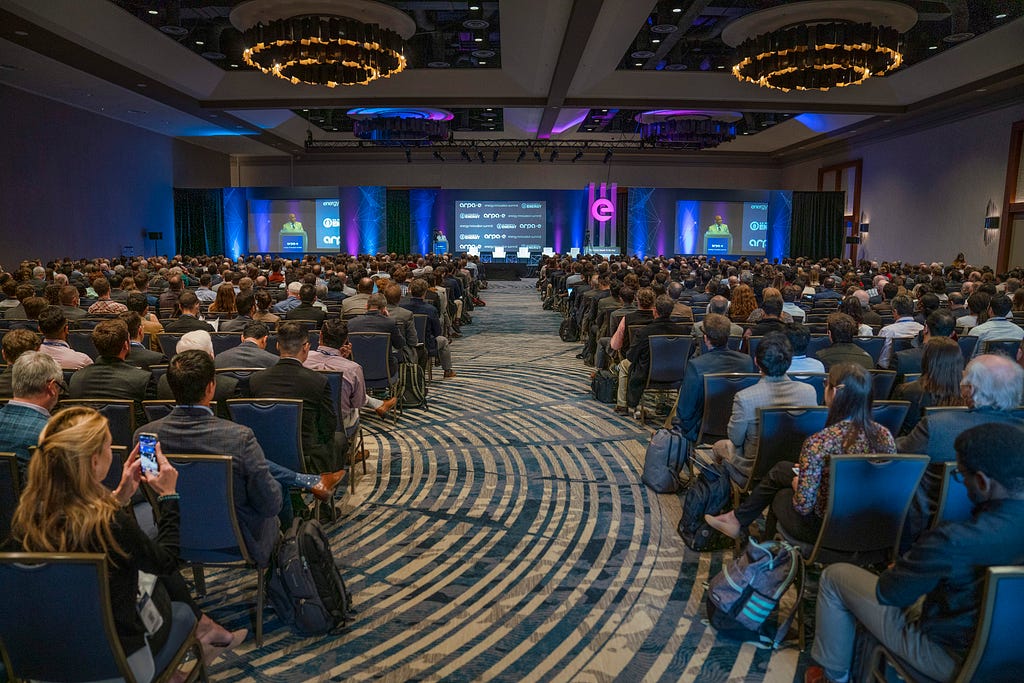From photovoltaics and artificial intelligence to seaweed farms and microgrids, the perfect antidote to climate change anxiety was on display last week at the Department of Energy’s ARPA-E Energy Innovation Summit at the National Harbor in Maryland.
ARPA-E, which stands for the Advanced Research Projects Agency-Energy, hosted a program that provided hundreds of incredible innovators with a platform and roadmap to help move their cutting-edge clean energy ideas closer to reality and hopefully to the marketplace.

And without doubt, it proved to be incredibly timely.
While a surge of federal clean energy investments in 2022, including the trifecta of the Inflation Reduction Act, CHIPS and Science act and the Bipartisan Infrastructure act, have rightly provided optimism that the US can get on track to meet its climate emissions goals, there is a lot of work still to be done.
The recent UN Intergovernmental Panel on Climate Change starkly illustrated why governments and the private sector need to redouble their efforts to build a clean energy economy — the world will breach the critical 1.5 degree warming threshold in the next decade and now the focus must shift to bringing that number down swiftly.
We are already seeing the economic and human costs of climate change — weather related disasters have cost the US economy over $750 billion in the last five years alone. Things will only get worse in the years to come and we all need to act to stave off graver warming increases.
Doing so will require transformation across the economy — a transformation that holds great potential but which also needs to happen with speed!
That means leveraging the federal and state investments to deploy the clean technology we have today.
But we cannot stop there.
As Republican Senator Lisa Murkowski (AK) noted in her day two keynote address we “cannot meet the challenges of tomorrow with the technology of today” we need innovations.
The ARPA-E Summit was an opportunity to learn about these “next generation” ideas and to support some of the changemakers who will help build the clean energy future required to tackle climate change, create good American jobs and scale up the economy.
Attendees included founders like Brian Wilcox, Marine BioEnergy, who is working on creating new sustainable aviation fuel, feedstock and fertilizer out of ocean kelp; Adrienne Tsier and Bharadwaja Ryali with Antora — striving to scale up storage for zero-emission heat and power on demand; and the team at Etajoule seeking to leverage machine learning for extraordinary energy efficiency.

From power to buildings to agriculture, the Summit provided a snapshot of the work that has to succeed for the US to successfully transition to a clean energy-based future; one that will allow us to bend the climate curve down while building a strong and vibrant economy for American workers and families.
As several speakers made clear, last year’s Federal Clean Energy Investments have provided the catalyst for clean energy deployment and innovations to scale up rapidly. But they must remain in place for the long haul. It is vital that we continue to support and defend those key public investments in our economic prosperity.
It was also abundantly clear that we must defend the ARPA-E funding streams that jumpstart and help sustain the early work of the dreamers and innovators — or as one speaker put it “engineers and imagineers” who are using their incredible skills and vision to both create a better, cleaner future and are putting in the work to get us there.

A Clean Energy Clarion Call at ARPA-E was originally published in e2org on Medium.
